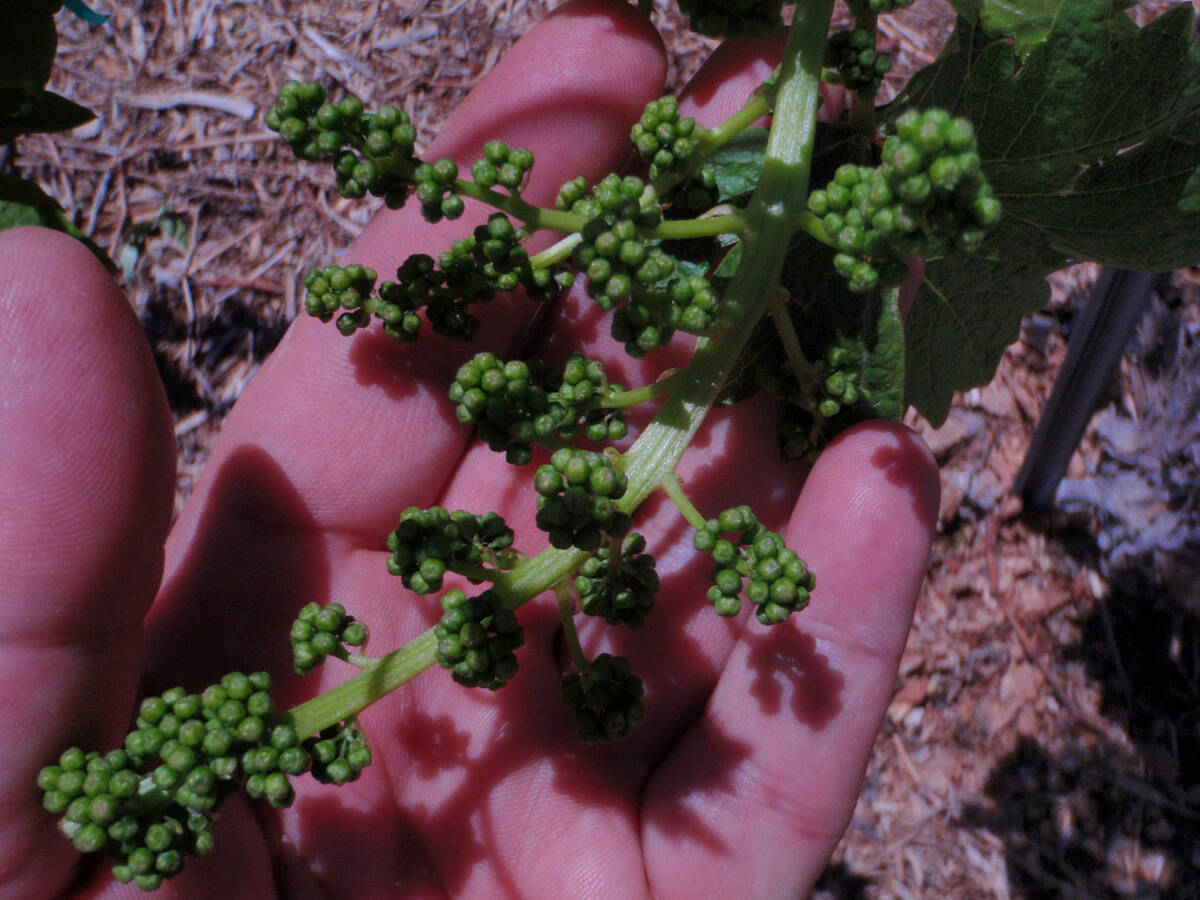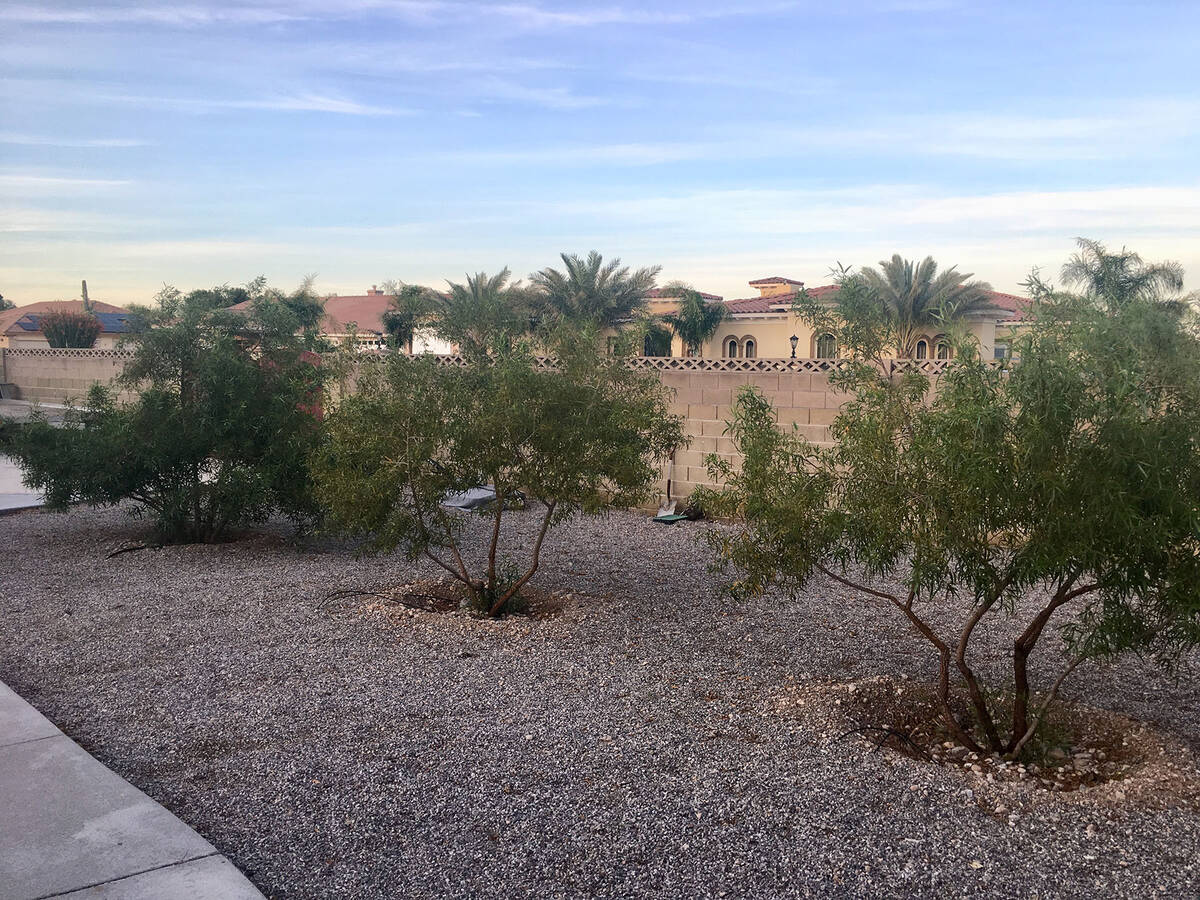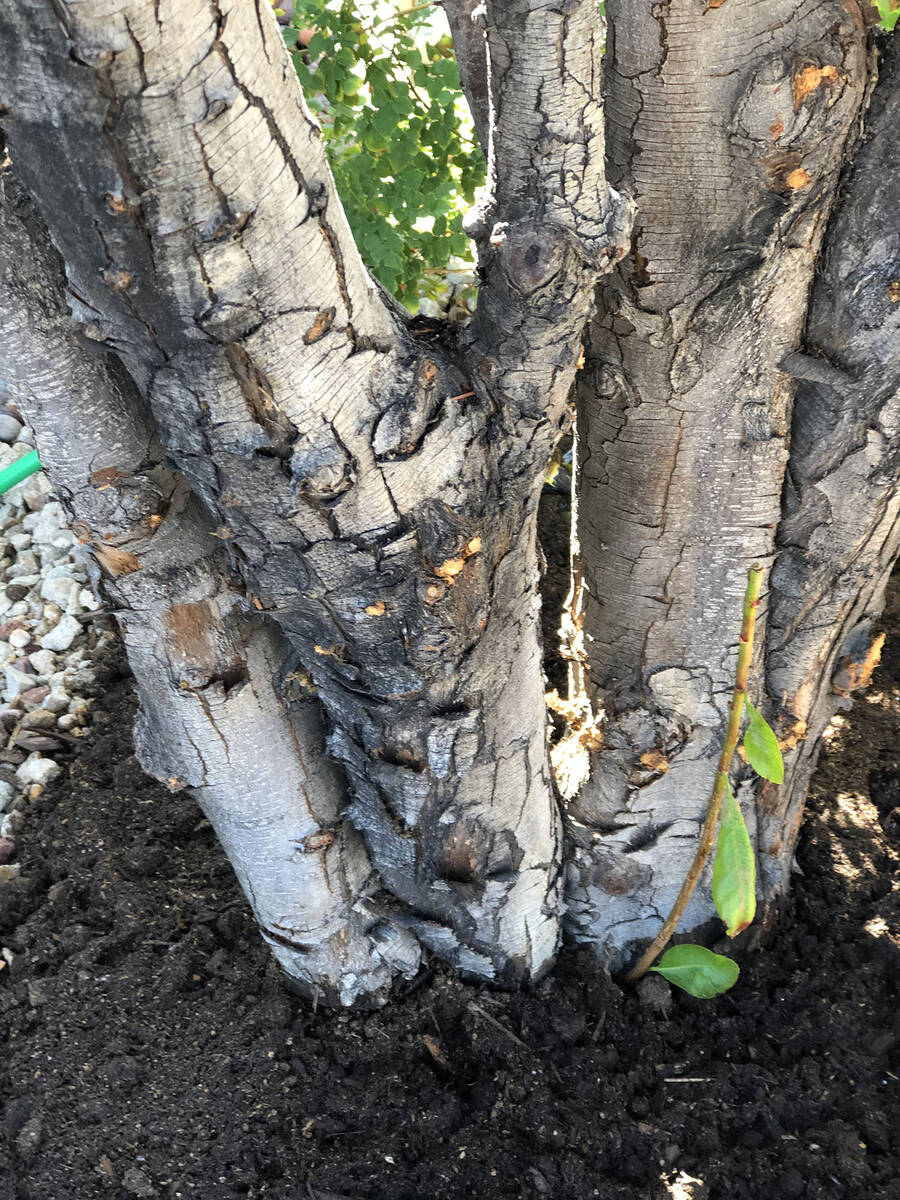Full sunlight essential for growing grapes
Q. We just moved to Las Vegas few days ago and inherited an old grape vine growing under a pine tree. Does it need to be watered at all in winter? When and how it should be pruned? What should I do to revive it? It might be in a wrong position as it is under a large pine tree next to wall, so it probably doesn’t get much sun.
A. Grapevines need eight hours of full sunlight every day. If it doesn’t get at least six hours of sunlight it needs to be moved from under the pine tree. Now is the time of year to move it. Prune it back hard and relocate it into full sun, preferably on the east side of a home or building. Some grapevines are grafted onto different roots, and some are not. I would prune it back no lower than two feet tall.
Grapes flower the first to the second week of March in our climate. Grapevines do best in our desert when planted like fruit trees: in amended soil covered in wood chips. Grapes should be fertilized once in the spring and watered with the same frequency as fruit trees. Grapes are deep rooted, more so than fruit trees, so they have the potential for being watered less often than fruit trees.
Q. My Texas Ebony landscape trees are 15 years old and have always been very healthy and dense. Since last summer the trees have died back. We had to cut out 5 percent to 10 percent of the dead wood. We neglected to provide supplemental water frequently enough during the last hot summer. We have noticed both nodules, holes and bark loss. Do you have any thoughts on what we are dealing with and help on how we can remedy this?
A. I would apply systemic borer control to the base of the tree as a liquid soil drench as soon as it finishes flowering in late spring or early summer. Texas Ebony is a great xeric or low-water-use tree for our landscapes. It hails from the Chihuahuan desert and can get as tall as a mulberry or olive tree. After the tree has become established in the landscape it requires irrigation perhaps every two weeks during the heat of the summer. Plant and establish this tree in the spring or fall and use amended soil, weekly irrigations and staking. This tree does well in rock-covered landscapes.
I suspect this damage is from intense sunlight. The Palo Verde borer is feeding on the roots of this tree or flat headed borers on the trunk or limbs or all three. The systemic borer control provides some measure of control if borers are the problem but not from damage due to intense sunlight.
Make sure the tree was planted and watered correctly. Amended soil or compost should have been mixed with the soil when it was planted. The tree should have been staked after planting. After planting, irrigate this tree to a depth of 24 inches once a week. After one year, the tree is watered less often and planting stakes should be removed.
This tree, like many of our landscape trees, are sensitive to intense sunlight on the trunk. Intense sunlight causes the trunk to sunburn. This damage is followed by an invasion of flat headed borers. The bark can fall off the tree due to sunburn or borers.
Drenching the soil around the tree with a systemic borer insecticide helps control borer damage until it recovers.
The canopy of the tree must shade the trunk and limbs. Do not let landscape maintenance “tree trimmers” prune this tree high or damage from intense sunlight can occur.
Q. Do you have a systemic borer insecticide you recommend?
A. The ingredients of a systemic insecticide used for borer control contains imidacloprid, which lasts up to 12 months inside the tree. In my opinion, it is a bit dangerous to use regularly. Use it only as a last resort or when saving a plant from extensive damage or death.
In my experience cutting out the borers from the tree with a sharp, sanitized knife is a better method unless the tree will die if you don’t make an application.
Imidacloprid ingredients come under several trade names and manufacturers such as Bayer. It can be applied as a soil drench around the tree or applied as a spray. If it is approved for these purposes, the approach to use will be listed on the label.
Imidacloprid has been implicated (not proven) in colony collapse disease because of its impact on pollen and honeybees. This is the reason it is applied after the tree has finished flowering.
Q. I have two African sumac trees in my front yard. One has dark green leaves and the other always had lighter colored leaves. Looking around my neighborhood I have seen the same in all yards with these trees. Is there a reason for this?
A. I don’t know of a reason for it offhand unless it is genetic. There are female and male African sumac trees. There are differences between these trees but the reason for the difference in color is usually either genetic or the use of nitrogen/iron fertilizers.
Look at its growth and leaves. If they are similar, then I think you can assume it’s genetic.
Q. I am new to desert gardening and have a keyhole garden that I’ve tried with no success. The Master Gardener at a local nursery recommended that I remove all the soil and replace it with their vegetable and herb soil mix. I was hoping you could share some of your expertise in all things related to keyhole gardening.
A. I don’t know anything about keyhole gardening and had to look it up. I understand from its marketing information that it is promoted as a good method to use for desert gardening.
Be wary of anything that reinvents the wheel. There’s nothing wrong with traditional gardening, even in the hot desert. Be careful of soils and soil amendments. Make sure they are good enough for your specific type of gardening method. Join a gardening group and learn what they have done to be successful. Experiment with these unconventional methods of gardening after you have become a good desert gardener.
If you’re not having success, then it oftentimes boils down to your techniques, the soil used or both. There is nothing magical about gardening and nothing wrong with the standardized approach of amending the soil appropriately for vegetables and herbs. There is nothing new about the science of gardening, only its application.
Here are six solid principles to follow when gardening:
1. Remember that vegetables and herbs need eight hours of sunlight each day.
2. Warm season vegetables are planted sometime between the middle of February and the middle of March depending upon the weather and your predictions for the upcoming weather.
3. Vegetables require soil that can be dug easily with a hand trowel. Mix compost with the soil when it becomes difficult to use a hand trowel or when plants start struggling.
4. Water vegetables before the heat of the day; before 7 a.m. in the summer and 8 a.m. in the winter months.
5. Vegetable and herb gardens need to be fertilized regularly to sustain their growth and replace what was harvested.
6. Plant proven varieties of vegetables and herbs, then experiment with others by slowly introducing their use.
Bob Morris is a horticulture expert and professor emeritus of the University of Nevada, Las Vegas. Visit his blog at xtremehorticulture.blogspot.com. Send questions to Extremehort@aol.com.










